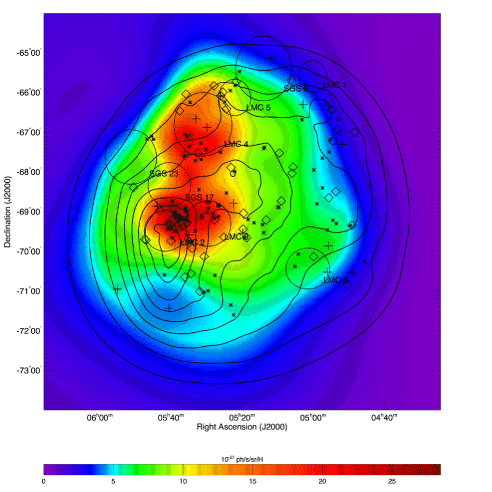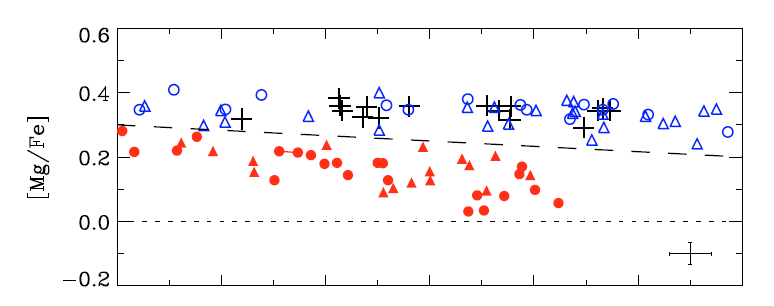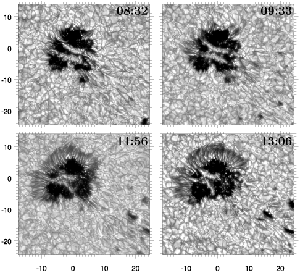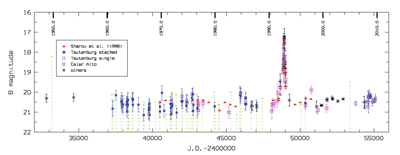Highlights - 19 March 2010 (vol. 511-512)
- Details
-
Published on 10 March 2010
| HIGHLIGHTS: this week in A&A
|
19 March 2010 (vol. 511-512)
|
In section 4. Extragalactic astronomy
“Observations of the Large Magellanic Cloud with Fermi”, by A.A Abdo, M. Ackermann, M. Ajello, et al., A&A 512, A7
The gamma-ray emission from the LMC shows very little correlation with gas density and is rather correlated to tracers of massive star-forming regions. The close confinement of gamma-ray emission to star-forming regions suggests a relatively short GeV cosmic-ray proton diffusion length.
A NASA press release about these results was issued in November 2009, during the 2009 Fermi Symposium.
|

|
|
In section 1. Letters
“Two distinct halo populations in the solar neigborhood. Evidence from stellar abundance ratios and kinematics”, by P.E. Nissen and W.J. Schuster, A&A 511, L10
The paper by Nissen and Schuster presents an abundance analysis of nearby Milky Way halo stars based on high-resolution spectroscopic data. This analysis leads to detection of two distinct populations among the halo stars with different surface abundance patterns and kinemantic properties. The authors discuss the possible origin of these two components.
|

|
|
In section 1. Letters
“The formation of a sunspot penumbra”, by R. Schlichenmaier, et al., A&A 512, L1
In this manuscript the formation of a penumbra around a sunspot
has been documented with unprecedented accuracy. The authors conclude that there is an upper limit to the size of the dark core,
the umbra, and any additional magnetic flux emerging through the
surface forming the penumbra, a highly filamentary
structure surrounding the umbra.
|

|
|
In section 4. Extragalactic astronomy
“J004457+4123 (Sharov 21): not a remarkable nova in M 31 but a background quasar with a spectacular UV flare”, by H. Meusinger, et al., A&A 512, A1
Microlensing surveys of Local Group galaxies have produced a wealth of
candidate events and stars that intrinsically vary rapidly, often novae
that would otherwise go undetected. This paper studies one of those
objects and demonstrates that it is, in fact, a background moderate
redshift quasar (z = 2.11) that underwent a two year (observer's
frame) outburst in the mid-ultraviolet. The authors use a large
archive of photographic and digital images, covering the interval from
1950 to the present, which pinpoint the outburst to 1992 and also
present optical spectroscopy and multiwavelength spectrophotometry from
X-ray through centimeter ranges assembled from a broad set of data. This article is a superb demonstration of how novel results can be one of the byproducts of lensing surveys.
|

|
You can now receive the A&A weekly Highlights by email. To subscribe to the A&A Highlights emailing list, please send an email to This email address is being protected from spambots. You need JavaScript enabled to view it.
© Astronomy & Astrophysics 2010





